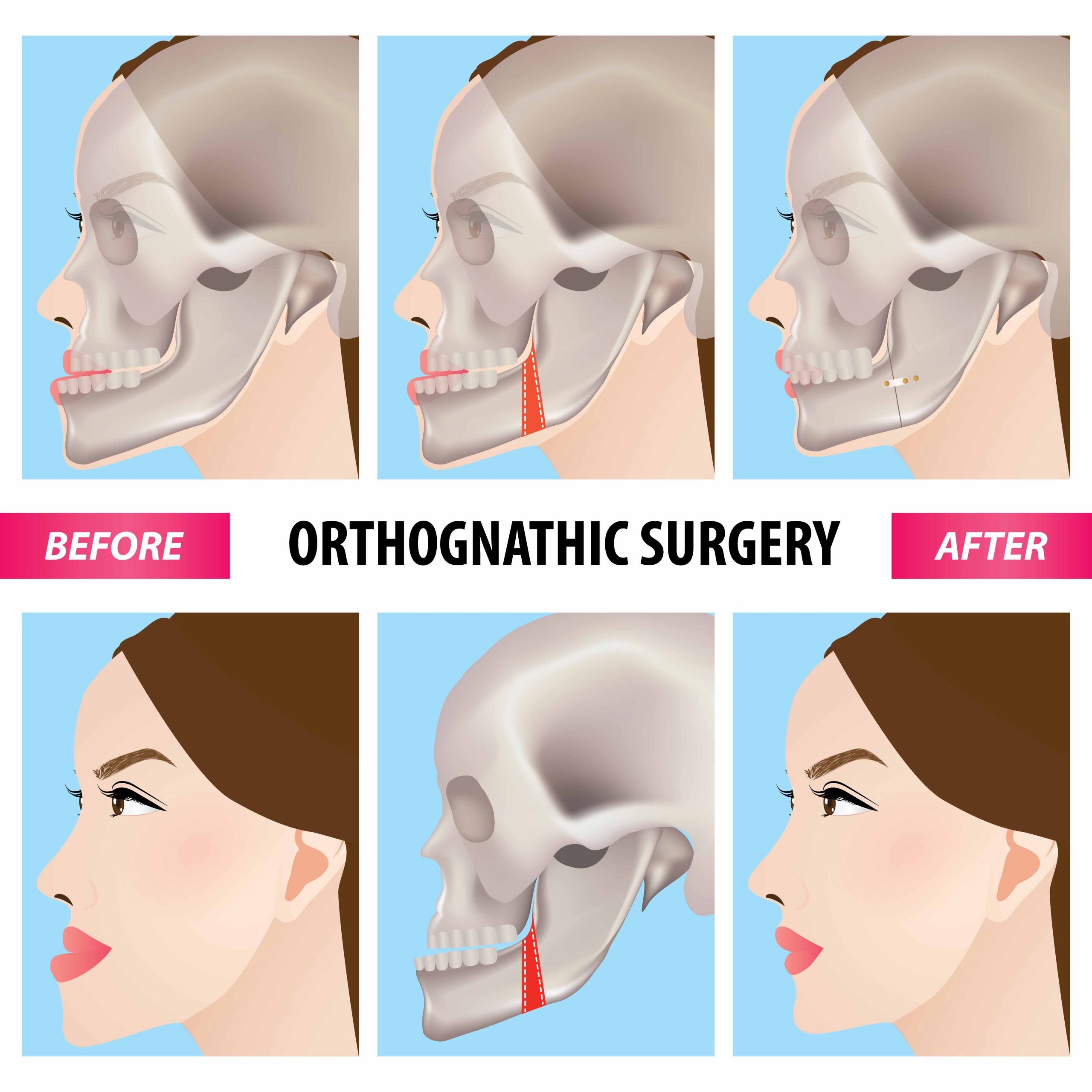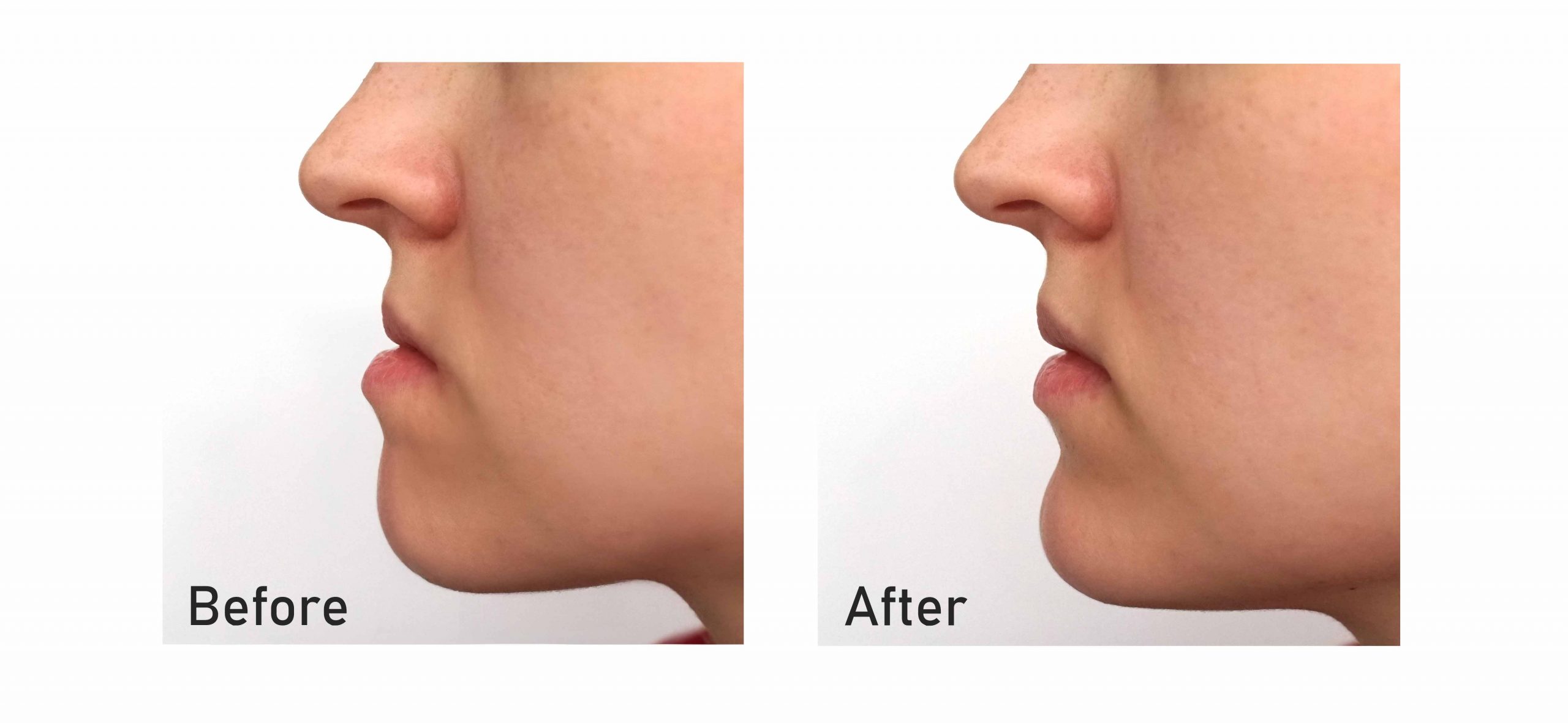How Orthognathic Surgery Can Correct Your Jaw Issues?
Orthognathic Surgery helps to correct the irregularities of the jaw, and assists in realigning the teeth and jaws in order to improve the way they function. Making these alterations also help in enhancing a person’s facial appearance. Also termed as jaw straightening, the surgery might be the only available option if orthodontics alone cannot solve problems related to your jaw. In majority cases, you would require braces on your teeth prior to the surgery, during the recovery period, and after the treatment until alignment until you heal completely.
Who is an ideal candidate for the Procedure?
Ideal candidates for Orthognathic Surgery include people who:
Are looking to enhance facial disproportion
Have bite discrepancy
Have attempted to correct their skeletal issue and relied on orthodontics for years
Have realistic expectations and goals regarding the procedure and results
Are non-smokers

What Jaw Straightening can help with?
This treatment can assist you in a range of causes. Let’s see if you identify with any of them:
Facial imbalances including chin deficiencies, asymmetry, lower or/and upper jaw under-development
Bite discrepancies like underbite, overbite, crossbite and openbite
Obstructive sleep apnea
Makes chewing and biting a lot easier
Minimizes excessive wear down of the teeth
Corrects problems with speech and swallowing
Repairs birth defects or facial injury
Allows the lips to close comfortably
Find a Plastic Surgeon in Your Area
Find Top Surgeons in India by Procedure
Find the Cost of a Procedure
What to expect with the surgery?
Maxillofacial and oral surgeons usually perform the jaw straightening surgery by administering general anesthesia to the patients. They perform surgery inside the mouth so there is no fear of facial scars. However, at times, there may arise need for making small incisions outside the mouth. After creating the cuts in the jawbone, the surgeon moves them to the correct position. Once done, the specialist might use screws, bone plates, rubber bands and wires to secure the jawbone in its new position. These screws integrate with the bone structure over time.
Upper Jaw Surgery/ maxillary osteotomy
You can undergo surgery on the upper jaw to correct:
Crossbite or openbite
Too little or excessive of the teeth protruding/showing
Protruding or receding upper jaw
Midfacial hypoplasia
For this procedure, the oral surgeon cuts the bone right above the teeth so that the upper jaw can move as one unit. He pushes forward the upper teeth along with the jaw until they fit in perfectly with the lower jaw. At the time of realignment, the expert can plan the process on a computer to determine if there is any requirement of some additional work like orthodontics.
Lower jaw Surgery/ mandibular osteotomy
Surgery on the lower jaw can correct problems related to:
Protruding lower jaw
Receding lower jaw
As a part of this surgery, the oral surgeon makes cuts behind the molars as well as lengthwise down the jaw so that the front part of the jaw can move as one unit. Next, he moves the jaw to its new position either backward or forward.

Chin Surgery/ genioplasty
Chin surgery can effectively correct a deficient chin accompanied by a receded lower jaw. Dental surgeons can restructure the chin and alter the jaw during the same surgery. It requires cutting a piece of the chin bone on the front of the jaw. The expert moves it forward and then secures it in place with screws and plates.
Preparing for Jaw straightening surgery
The orthodontist usually would ask you to wear braces on your teeth for nearly 12-18 months before the surgery to level your teeth. The surgeon and orthodontist work together to create a treatment plan for you. Pictures, x-rays and models of your teeth are all part of the planning process. The use of computer-guided planning, 3-D CT scans and orthodontic anchoring devices can reduce your time in braces and aid the movement of teeth. In a few cases, these measures alone can eliminate the need to have a jaw straightening surgery.
Recovery after the Surgery
When you wake up right after the surgery, the anesthesia can make you feel sleepy and swollen. You will be able to move your mouth right after the procedure. Nevertheless, the use of gentle elastic bands will be essential from the next day along with the braces to guide the jaw into position. For the first few days after the Orthognathic Surgery, your face can remain swollen and you can experience some bruising on your chin and at times on your neck as well. The numbness and soreness will take some time to go away and you can use ice packs to ease the pain. In most cases, you should be able to get up and move within a day or two. It may however take around month for you to return to your normal routine.
Takeaway
After the jaw straightening surgery, it is crucial that you keep your braces and mouth clean in order to prevent any infection. Consulting a dental hygienist would guide you accordingly. Remember that your mouth can feel a bit fragile and everything new for the first few months but eventually after a few months, you should be able to feel your normal self again. Paying attention to the aftercare tips as given by the surgeon is necessary for quick healing and recovery.


